#this author from 1951 GETS ME
Explore tagged Tumblr posts
Text

Crying because this is exactly what I sound like whenever there's a heatwave
#that last line had me in tears#this author from 1951 GETS ME#also kinda reassuring to see that montreal summers have always been horrible and its not just climate change
41 notes
·
View notes
Note
In Marauder era (or 1st Wizarding World era) fics, all the characters that we know from the actual books/movies (i.e., The Marauders + Lily, the Malfoys, Bellatrix, etc.), or just characters that are more known, are all put in Hogwarts together at the same time, and it confuses me.
They couldn’t have all been at school together, could they? And even if they were, most of them would have to be years ahead, no? It especially confuses me when Bellatrix is the one in school with them, but her and Narcissa are the only ones that are ever mentioned. Andromeda is literally not that much younger than Bella and older than Narcissa, so you would think that she would appear, yet she doesn’t. Why exactly are they always all bunched together? And what are their actual ages?
this is a bit of worldbuilding which i'm not fond of either, anon.
i get why it happens - hogwarts is a school and, therefore, requires a large cast of characters as fellow students, and since marauders-era writers don't have the advantage that lightning gen writers do of being able to lift these characters directly from the text, the few names we do know from canon of people who lived and died during the first war get used to fill in the gaps.
there are also - obviously - some inconsistencies in the text itself caused by jkr's functional innumeracy. if we take the date of birth given for bellatrix on the black family tree she drew in 2006 - 1951 - then she would graduate hogwarts in either 1969 or 1970, depending on when in the year her birthday is. but sirius says in goblet of fire that she was friends with snape at school.
i ignore sirius and go with the given date of birth because it works better for my worldbuilding - and i have andromeda born in 1953 [leaving hogwarts in 1971 or 1972] and narcissa born in 1955, as per the family tree, but in the autumn [therefore leaving hogwarts in 1974 - and married in 1975, allowing narcissa's wedding to be the last time sirius sees bellatrix, since, as he tells us in order of the phoenix, this took place when he was fifteen] - but i think authors can shift the sisters' birthdays later if they do want to have them overlap more with the marauders generation without it being too much of a problem.
lucius malfoy's date of birth can be worked out fairly easily from canon. in the autumn of 1995, he's forty-one - as we're told in order of the phoenix - which means he was born in 1954 [or - if he has a winter birthday - late 1953] and was at hogwarts between either 1965-1972 or 1966-1973 depending on when in the year his exact birthday is - if it's october 1953-august 1954, he's in the former cohort; if it's september 1954 [which is when the article in which his age is mentioned is published] then he's in the latter. we know he overlaps with the marauders cohort very briefly - since he's shown meeting snape in the prince's tale - but, since he's either a sixth- or seventh-year at the time, i find it unlikely that he paid james and sirius much attention, or that they paid him much attention in turn.
[lucius must - let's be real - go rather under the radar, since he's clearly able to recruit death eaters while at school - and immediately after leaving it - without being noticed.]
what i'm much less inclined to be flexible on is the fanon which has characters like dorcas meadowes, marlene mckinnon, emmeline vance, and so on all be at hogwarts with the marauders - which doesn't work for me for the very basic reason that the order of the phoenix is not an army of child soldiers.
the implication of canon is definitely that the four marauders and lily are an exception to the make-up of the rest of the order - likely for the sensible tactical reason that dumbledore had all the ministry infiltrators he needed, but didn't have people who would be able to provide information about voldemort's recruitment of younger death eaters, which the marauders were clearly able to do by virtue of having been at school with them all [and - in sirius' case - being related to two of them].
it's also clear in the text that dorcas meadowes [who is the only person in the first war other than james and lily we know was killed by voldemort himself] must have been an important political figure - otherwise the dark lord would have left her for one of his minions - and that james and lily don't know marlene mckinnon well enough for her to have been a school friend.
[if she was - as is the common fanon - sirius' teenage girlfriend, i would like to hope that lily's letter to him mentioning her death would devote a little more space to the event than it canonically does...]
what i love to see is the rest of the order - hardened aurors and civil servants who've been locked into the war with voldemort since the marauders started school - being a combination of faintly amused and supremely irritated by the group of cocky young bastards who've just turned up at their meetings, and who seem to think the whole "being a paramilitary" thing is a big laugh.
[especially because it's then so much easier to explain why everyone involved could believe that sirius was guilty...]
74 notes
·
View notes
Text
9 TBRs for 2025









I was delighted to get tagged by the fabulous @burberrycanary! Thank you. <3
The Woman Upstairs by Claire Messud
The desire to read Messud's novel about an elementary schoolteacher who seems nice and calm on the outside but is secretly seething with anger and frustration on the inside was sparked by this post and a subsequent conversation with @village-skeptic about unlikeable female protagonists. I've been dying to read this for a while now, but it was surprisingly difficult to find in physical form (I'm sick of looking at screens all day and my library only had the ebook). Package tracking tells me it's finally due to arrive on January 10. I'm genuinely so very excited to read this!
Our Evenings by Alan Hollinghurst
This novel, which traces the life of a gay, biracial actor in England from the 1960s to the pandemic is only one example of a whole number of books* on my TBR about queer middle-aged men looking back on their lives and in the process delving into themes of personal growth, identity, and cultural and societal change. Wonder what that says about me as I approach middle age ever more rapidly myself? One can only speculate, of course...
*see also: Four Squares by Bobby Finger; My Ex-Life by Stephen McCauley; Caledonian Road by Andrew O'Hagan
Madhouse at the End of the Earth: The Belgica's Journey into the Dark Antarctic Night by Julian Sancton
Not much to say about this except that my thirst for books about doomed (Ant)arctic expeditions has apparently still not been quenched. I guess this is my version of True Crime. This has made several Best-of lists, so I hope that it'll be well-written (and edited!) too, which is not always a given with nonfiction books.
The Winter Soldier by Daniel Mason
The assumption is an obvious one to make, but no, this has nothing to do with the #1 Blorbo of my heart. This is actually a novel about a young medical student from Vienna thrown into a remote WWI field hospital, where he soon leaves behind any romantic notions about glory and heroism as he faces the brutal reality of war. I've read the first 50 pages of this a while ago, and I'm really eager to get back to it.
Effingers by Gabriele Tergit
This 1951 novel is often described as the "Jewish Buddenbrooks"—a comparison that I understand for marketing purposes but that I nevertheless do not like for a whole host of reasons. It’s an epic, multigenerational story about a German-Jewish family from the late 19th century through WWII. I got a beautiful special hardcover edition of this for Christmas and I can't wait to savor all 904 pages of it.
Secret City: The Hidden History of Gay Washington by James Kirchick
Speaking of long books. I bought this 848-page brick of a political and social history of queer (not exclusively gay as the misleading title would suggest) Washington at the height of my Fellow Travelers obsession... and then I just never got around to reading it. A failure that I really want to make up for this year.
Daddy by Emma Cline
I already very much liked but did not unreservedly love Emma Cline's debut The Girls. However, I was completely blown away by her follow-up novel The Guest, which she published last year, and which instantly catapulted her to auto-buy status for me. So, it's only natural that I would want to read the only book of hers that I haven't read yet. Daddy is a short story collection, which will hopefully deliver the same sharp observations, wonderfully complex characters, and elegant & precise prose that I have adored so much in her novels.
The Warm Hands of Ghosts by Katherine Arden
To be honest, the premise of this—historical fiction with supernatural elements, following a combat nurse during WWI searching for her missing brother—does not super excite me (anything magical realism-adjacent has traditionally not been a great success for me) and reviews seem to be pretty mixed. But. Katherine Arden is the author of my beloved Winternight Trilogy*, so I will at least give this a fair chance.
*seriously I want to grab all the Romantasy girlies and shove this into their hands instead of whatever latest abomination Cassandra Clare or Sarah J. Maas have cooked up. ...uh, sorry if you're a fan? 😬
Manhattan Beach by Jennifer Egan
I read and enjoyed Jennifer Egan's Pulitzer Prize-winning novel A Visit from the Goon Squad many years ago and have been meaning to read another book by her ever since. When a couple of my family members asked what I wanted for Christmas and I put together a little list for them (cause that's what I do), I stumbled upon Manhattan Beach. It's a blend of historical fiction, mystery, and family drama set in Depression-era New York City, about a young woman who pioneers as the first professional female diver at the Brooklyn Navy Yard. Does that not sound like the perfect book for me? Seriously, the summary reads like I made it up in fever dream!
--
Looking back over this list, I'm somewhat surprised to realize that it gives the impression that I'm much more of a historical fiction reader than I actually am. Or thought myself to be, I guess. Huh! How about that.
Ok tagging: @ethicalhorseslaughter, @burninblood, @thisonesatellite, @between-a-ship-and-a-hard-place, @voylitscope, @aimmyarrowshigh, @weenhand, @painted-doe, @buckrogers, @maplefiasco and everyone else who wants to do this! Show me your books, please.
(I know this has been making the rounds, so apologies if I double- or triple-tagged anyone.)
33 notes
·
View notes
Text
Thinking a bit about baseball and how it runs in my family so thoroughly on both sides.
My dad's father was such a good amateur third baseman that he was scouted by the Yankees. We have a letter from the team inviting him to tryouts. But he'd just started a family at the time and the Minor League life is rough, and it was rougher still in the 1950s, so he remained an amateur player who nevertheless had a deep love of the game. He apparently met and played with Willie Mays during the Korean War when he was stationed stateside. He got Mays to etch his name on the strap of his helmet. We still have that, too.

(Image description: the author's paternal grandfather in a right-handed batting stance.)
On my mom's side things were entertaining. My mom's grandfather was a New York (later SF) Giants fan. He and his wife had three children, who they raised in the Bronx. The oldest, my grandmother, was a Giants fan like him. The middle child, my great-aunt, decided she had to be different and adopted the Brooklyn Dodgers. The youngest child, my great-uncle, furthered that and became a Yankees fan.
Allegedly, according to my great-aunt, my great-grandfather predicted the Giants, then behind, would win the National League pennant in 1951. She was incredulous because at the time the Dodgers were well in first place. Until they weren't.
youtube
[Video description: Giants third baseman Bobby Thomson clobbers a 3-run homer off of Dodgers pitcher Ralph Branca to win the 1951 National League pennant. This moment is known as The Shot Heard Round The World and the radio call only survives because a fan was at work during the game and had his mom record it off the radio for him.]
This family arrangement continued for a few more years until the Dodgers and Giants left for California in the late 1950s, and the National League members of the family drifted until 1962, when the Mets started playing. My grandmother and great-aunt both picked them up immediately and it's been that way on my mom's side ever since - the people descended from my grandmother and great-aunt are Mets fans, and the people descended from my great-uncle are Yankees fans.

[Image description: the man who somehow knew the Giants would win the 1951 pennant carrying his firstborn child, my grandmother, on his back on all fours, likely in 1932.]
Grandma Dot was a deeply passionate Mets fan and passed that trait to her daughter, who at one point had a huge baseball card collection and knew the Mets's stats better than all the boys in her school. My mom experienced her first World Series win at the age of 10 in 1969 and from there she would be loyal forever. She and my dad were married a few days after the Mets's second World Series win in 1986 and my younger brother and I would be raised on stories of that team during our early years.

[Image description: the author and her brother photographed from the back at Citi Field. The author is wearing a Gary Carter jersey and her brother is wearing a Mookie Wilson jersey.]
Although I get baseball from both sides of my family, the intense passion for National League baseball in New York has been passed down matrilineally, from my grandmother to my mother to me, and I cherish that deeply. I'm the culmination of three generations of baseball-loving women and I think that's actually really cool.
I'm mostly writing this because I don't quite want to let this Mets team go yet. They were so much fun this year and I already miss them so much, and they took us so much farther than anyone expected. 2024 wasn't our year, but it was one hell of a year and I love this cast of characters a lot.
This World Series would have divided my grandmother's family in the 1950s. Not so much today, since the Mets aren't there, but the Dodgers and Yankees haven't played in the WS against each other since 1981, and before their move to LA the Dodgers and Yankees met a few times in the 1950s. I wonder what my grandmother's siblings talked about, or if they trash talked each other, or if they gathered around the radio together for the play by play.
I just love how much this sport is literally in my blood.
22 notes
·
View notes
Text
Do yall wanna know my actual favorite butterfly effect?
Two people fucking on a mountain indirectly lead to my favorite comic of all time, Under the Red Hood.
Let me explain.
Joseph Hugo married a woman named Sophie Trébuchet in 1797. He was a general in Napoleon's army so they moved around quite a bit. In a letter he would later write to his son, he and his wife had been on a trip on June 24th 1801 to get from one post to the next and he believed this, on the highest peaks of the Vosges Mountains, is where he believed they conceived their son, who would later become the Ocean Man and famed author Victor Hugo.
(Fun fact: Jean Valjeans prisoner number, 24601, is absolutely in reference to his believed conception date)
Victor Hugo grows up and obviously is responsible for many works, such as Les Miserables and The Hunchback of Notre-Dame and was never one to shy away from political commentary. Thus, he was exiled from France and sent to living on the Channel Islands. It was here that he wrote a novel titled The Man Who Laughs.
Like many of his works, this one does have different adaptations. One in particular came out in 1928 starring Conrad Veidt as the character Gwynplaine, or the Man Who Laughs.
Fast forward about a little over a decade later in 1940. A comic book writer comes into work to be greeted by two artists he worked with, one who did significantly less work than the others. These three men were Bill Finger, Bob Kane and Jerry Robinson.
Now the details of this meeting are...well, up in the air. Each man had their own account to it, and Bob Kane especially is the most unreliable given that he took credit for literally everything and we went over 70 years without Bill Finger getting any sort of credit to actually creating Batman. But what we do know is that there was a drawing of a playing card and a face for the joker card; and Bill Finger said, "Hey, that looks like Conrad Veidt in the Man Who Laughs."
They pushed further with that angle in making the character, a new villain for their hero; the obvious, Joker.
Some years later we get a little bit of an origin story in 1951, in the comic The Man Behind the Red Hood! (ALSO written by Bill Finger) Some college students are trying to solve this decades old case of a burglar in a red pill helmet that was called the Red Hood and trying to figure out who it was. Teaming up with Batman and Robin, they find out that the Red Hood was in fact Joker's old alias. He used to be a lab worker that was stealing from a playing card company with that alias. He was caught by Batman and threw himself into some chemical waste to escape, thus becoming the Joker.
This origin has stuck around in some form ever since. The moniker was unused for quite a long time after this, but would eventually find a new home in a different character.
See, in the 80s, Batman's second sidekick, Jason Todd, was killed off in a very brutal fashion after a fucking poll that people could call two different numbers to decide if they were going to save him or not. I will get into why I have so many frustrations with everything surrounding this story another day, but the important thing to know here is that the Joker killed Jason while Jason was trying to save his mother.
And for a good period of time there, Jason became a character that you did not bring back to life. Until they did.
A storyline running from 2005 to 2006 came into life, called Under the Hood. In it, Batman has to fight a new foe taking on the mantle of Red Hood, only to discover its Jason Todd, brought back to life from the Lazarus Pit, and taking on the mantle of the man that murdered him to go fucking murder the Joker and take control of crime in Gotham and do what he believes Bruce couldn't, all while dealing with trauma and feeling replaced.
So yeah. We wouldn't have my favorite character or story if it wasn't for Victor Hugo's parents fucking on a mountain and conceiving him there where "The elevated origin seems to have had effects on [Victor Hugo] so that [his] muse is continually sublime". That is a quote from that letter. Victor Hugo's mountain conception where he got a great muse is the reason for the Joker and Red Hood. Thanks for coming to my Ted talk.
67 notes
·
View notes
Text
Mack Brown

Physique: Average Build Height: 5'9’ (1.75 m)
William Mack Brown (born August 27, 1951) is an American college football coach. He is currently in his second stint as the head football coach for the University of North Carolina, where he first coached from 1988 until departing in 1997, when he left Chapel Hill to become head coach for the University of Texas. Brown, with a 251-128-1 overall record, was a 2018 inductee into the College Football Hall of Fame.





Daddy Mack is all most perfect for me. From the silver hair, to the great smile, to the big belly, the furry arms, and the fact that you occasionally get nice bulge shots from him. In 2006, the Cookeville, TN native was awarded the Paul "Bear" Bryant Award for "Coach of the Year", the second-winningest coach in Texas history and Carolina's all-time winningest coach. He is also a five-time winner of the 'Sexiest Coach' accolade which is sponsored by Mature Men of TV and Films. I have it on good authority that he values these awards above any of his football successes.


Again married, but aren’t all the men I like are? They have four children which makes me speculate that he loves to fuck. What? You can't have that many children and not love fucking. Any way, there isn’t much else I can say about him other than he’s handsome and I’d love to fuck him.



122 notes
·
View notes
Text
thoughts i've had while reading the Foucault biography by David Macey:
(1) Foucault was a bourgeois and his entry into the elite higher educational institutions involved a number of processes that were designed very specifically to select for the children of bourgeois, in a way that reminds me a lot of the recent post by gothhabiba (click). one example which particular concerns philosophy is that entering the highly competiitve ENS would require knowledge of philosophy (Kant etc.), which was only taught to highschool students at the fee-charging lycees. further, philosophy was taught at lycees by ENS graduates, who may also be on the comittee that selects ENS applicants. this—along with a few direct interventions of actual nepotism—is how Foucault got there in the first place, because some (FAMOUS) men (like Jean Hyppolite!) met him as a child and decided he was 'very intelligent'. the same story repeats when Foucault gets his first few academic posts, with recognizable names balancing the scales for him. this does not seem to be something special but rather how all applications were judged and posts filled. there is a more subtle example for which analysis would be possible, but the book doesn't offer enough information, which is in the explicit discussion about how the topics for the oral agregation (necessary for graduation) should be selected. Macey concludes the section by saying that "[t]he 1951 agrégation [when Foucault graduated] had been a ‘Malthusian’ process of elimination: fourteen candidates were successful, and five of them were normaliens [ENS students]."
(2) throughout his youth into his late 20s (ie. the part i've read so far), Foucault seems to only ever—with the exception of patients and prisoners he met at the clinic when he worked there—interact with other members of the French elite. even in the communist party he attends a special ENS chapter and so forth. this may simply be because only famous men leave information to posterity, so we know less about Foucault's non-elite associations, or even that Macey just has nothing to say about those relationships, but it is quite striking. the same is not true of Deleuze per François Dosse's dual biography of Deleuze & Guattari (i mean anyway we talk about him in the same breath as Guattari who was not part of this system at all).
(3) he loved serialist music and had a live-in romantic relationship with a serialist composer named Jean Barraqué who was taught by Oliver Messaien. isn't that cool? they would go drinking between classes, just like we did when we studied serialism... haah...
(4) the biography skips around in time quite a bit; when Foucault first meets someone who will become important to his life we get a sort of summary of their whole relationship in rapid diegesis which will reoccur in a slower, although still diegetic, pace later in the book. this reminds me a lot of the way the Norse Sagas are written; in his excellent introduction to the Saga of Hrolf Kraki, Jesse Byock remarks that the author makes clear that he is compiling fragmentary sources by "telling the audience when one sub-tale ends and another begins: ‘Here ends the tale of Frodi and now begins the story of Hroar and Helgi, the sons of Halfdan.’" the biography of course also does this by explicitly mentioning, either in the text or in a footnote, which sources (books, interviews, letters, personal correspondences) the story is compiled from. when i thought about the Sagas i had thought of it as producing a very strange literary effect, almost like a Brechtian distancing effect, freely dispensing of suspense to remind the reader of the structural components of the narrative, and i have written some stories which try to perform this idea. however, now i realize that we still do this quite often, only in that peculiar form of literature called the biography, where it appears quite natural and doesn't surprise the reader. i think one explanation for the strangeness in the Sagas is that the Sagas are primarily in mimesis, and the sudden episodes of diegesis during which the story and the plot become momentarily disimbricated are surprising to a modern reader.
(5) Foucault suffers a bitter quarrel with another gay man named Jean-Paul Aron he was previously friends with which they would never rapproach. the reason for this quarrel is, according to Macey, because "one of Aron’s young lovers fled and took refuge with Foucault." Macey discusses this entirely in terms of "sexual jealousy" and "envy"—i suppose Macey is heterosexual because oh my god. doesn't that sound like such a familliar story to us... the guy had to run away from his partner and go and live with someone else over it... and it caused scene drama for the rest of their lives... what was going on there?
(6) in discussing the homophobia of the official French Communist Party to which Foucault belonged until 1953 (which was explicitly homophobic) the principal example which Macey chooses is a case where they expelled a highschool teacher for propositioning a pupil. for Macey this seems to only have the dimension of homosexuality, and neither the power dynamics of teacher and pupil nor the fact that the pupil was presumably a child are mentioned at all. this biography was written in 1993. it made me think immediately of a number of other instances of an adult man having or attempting a sexual interaction with an underaged boy, being penalized or imprisoned in some way, and the response of, essentially, the legitimate gay movement was to call it homophobic. i don't remember his name, but there was one composer, i think an American, in the 40s or 50s, who was imprisoned for sleeping with a 17 year old boy, and people came to his defense and considered the prosecution homophobic; similarly this highly sympathetic article (click) on the GLBT Encyclopedia Project about NAMBLA (who's periodical Delany used to read and recommend, something which he gets and still responds to emails about today), which opens with mention of "a successful effort on the part of gay activists to thwart a move by then-Boston District Attorney Garret Byrne to ferret out patrons of teenage male prostitutes via an anonymous telephone tip line", paints a picture where NAMBLA were relatively mainstream until the mid-80s. while i suspect this article of being at least a little apologetic it does also talk about gay organizing around changing age of consent laws & a line on how unequal enforcement of the age of consent was a tool to enforce homophobia, listing some impressive names who engaged in this kind of activism like Kate Millet and Gayle Rubin. and we also have, very infamously, Foucault's own advocacy on precisely the same thing, around the time of the petition, signed by Foucault and virtually every other French radical intellectual, to abolish the age of consent.
what do you think? from here doesn't it all look like a catastrophic blunder, something we're ashamed to remember and frightened to talk about? even when we're coming from an anti-carcereal, reparative, critical kind of perspective, something about the kind of narratives, defenses and advocacy from back then on such issues leaves us feeling alienated. i tend to think of it like this: that there was a historical situation where 1. all forms of homosexuality were illegal, 2. homosexuality was primarily understood in society, by both the right and left, as a kind of pedophilia, and 3. the concept of the age of consent was being redefined, socially and legally, at that time. this third point is specifically what Foucault was discussing in that interview, but i was interested to see the same point come up in a Defunctland video (click)(!), because—get this—one of the songs performed by Disney's in-house rock band Halyx was called 'Jailbait', and he asks the writer about it. on relistening to the song she immediately laughs in embarassment and says "please! what was i thinking back then!" and she has to basically do her own kind of historical-juridicial-philological analysis to attempt an explanation (timestamp), saying that they had "just done this thing saying that if you're over 18..." and so forth. her song by that title was performed by a female singer, and watching the performance i got the feeling that the intention was sort of twofold; in the first case, to exploit the imaginary erotic power of forbidden love ("i want you, baby / but you're jailbait"), and, in the context of a live performance, make the teenage boys in the audience feel wanted. i am not sure if the same effect is intended in Motorhead's song by that title ("i don't even dare to ask your age"). by the 90s you didn't get songs like this anymore; Boogie Down Productions' '13 and Good' is both condemnatory and paranoid and explicitly names it "statutory rape."
this isn't really a good thread of argument; i am not comparing like evidence. and i'd like to investigate contrary examples from that period—the documentary on NAMBLA Chickenhawk for example shows lesbian groups attacking NAMBLA members at demonstrations, and Andrea Dworkin was famously critical of NAMBLA—but i am anyway kind of interpreting Macey's framing as a 'pagan survival' of an older approach to these issues when they arose in a very different polemical context.
72 notes
·
View notes
Note
Re: My friends say Marxism-Leninism is Stalinist revisionism of Marx and Lenin and also the focus on “scientific” elements is extremely weak empirically and undermines communism by being pseudo-scientific. Are they wrong?
Not a hater, just want to know why they’re wrong. I’ve read the passages they’ve linked about socialist commodity production being a contradiction, and that seems true.
Also, reading history of Marxist-Leninist texts, seems like Stalin had influence over the formation of it as an ideology—famously Marx was not a Marxist (I know the context of the quote, but I think the point is still generally true) and Lenin was not a Leninist, but a Marxist. It is hard to not be suspicious of Stalin since I really can’t believe the treatment of the Old Bolsheviks was justified*
Especially because the M-Ls I see on here defend modern China (not fully, but a decent amount), and I don’t get how someone could say the Old Bolsheviks would need to be dealt with as they were AND that modern China is anything but complete bourgeois revisionism. The majority of the Maoists I know do not consider modern China socialist at all, so it is confusing to me to see M-Ls avoid full denunciations.
Again, I am not a hater or anything, I am trying to understand what seem to be contradictions in what I hear from my friends and read from theory.
I wouldn't say socialist commodity production was any more a contradiction than the socialist economy itself. Too often people get caught up in these thought patterns where they think things like "well why didn't the communist party just abolish money? Why did they pay different workers different amounts? Were they secretly bourgeois? Was it all just state capitalism?" I used to think all these things myself. It's a difficult process to study and understand how socialist economies came to be and the material conditions they faced in building up socialism in the real world.
The Soviets were not ignorant of the difficulties and contradictions inherent to economic planning within a socialist economy. The socialist economy was not viewed as ideal or as an end, and at every stage efforts were taken to minimize contradictions and deviations whenever possible. Whether or not you agree with the direction it was taken in or how effective their methods were, you must acknowledge that it was one step towards an eventual goal and not the goal itself, and that it was shaped by the material conditions not only within the Soviet Union but within the global economy, which the Soviet Union could not avoid interacting with if they wanted to develop their own economy.
If you want to know more about the Soviet perspective on the socialist economy, then it's a good idea to read contemporary Soviet textbooks, such as this 1954 textbook, Political Economy. Chapter 32 in particular goes into detail about socialist commodity production and the role of money in the Soviet economy.
As the leader of the Soviet Union during one of its most tumultuous periods and as a prolific author, I don't think it would be possible for Stalin not to have had a profound influence on Marxist-Leninist theory. His 1951 work "Economic Problems of Socialism in the USSR" was certainly fresh on the minds of those who put together the textbook I just mentioned. Regardless of how you feel about Stalin as a person (and to be clear, I do not think he was a good person for many reasons,) to simply dismiss everything he said or wrote or to dismiss everything inspired by his words as contaminated with some kind of original sin is to be more than just pseudo-scientific, it is to be entirely unscientific. If you are trying to make an effort to understand the development of socialism as it applies to the real world, then ignoring Stalin would just create an unnecessary gap in your knowledge. For better or worse, Stalin had a part in the shaping of socialism and socialist theory, regardless of which strain of thought you personally subscribe to.
Defending China and considering China to be socialist or non-revisionist are two different things. The Western attacks on China are still imperialist, anti-socialist and anti-communist despite any revisionism or liberalism in China, and the potential for the Chinese working class to achieve socialism or communism exists despite any revisionism or liberalism. I don't think it's uncontroversial to say that whether or not you agree with the liberal reforms in China, that China is still much more poised to achieve communism than any Western nation is. Deng might have been a revisionist, but compared to Gorbachev, his liberal reforms weren't nearly as destructive.
I linked this video in response to two other asks about China, and if you want to learn more you should definitely watch it.
youtube
14 notes
·
View notes
Text
Thousands of LGBTQ+ veterans who were discharged from the US military with less than honorable status and who were convicted under now obsolete laws because of their sexuality are getting pardons from President Biden.
Steve Marose, a former US Air Force officer who was discharged for being gay and who served prison time for consensual sodomy, said he had long hoped that one day he would be pardoned. "I can pretend that 'Oh, I'm resilient,' you know, 'I got this,' but in the end, it's trauma," Mr Marose told the BBC. He is one of thousands whose convictions were overturned on Wednesday, after US President Joe Biden announced that he would pardon those found guilty of crimes under a military law that banned gay sex for more than 60 years. Mr Biden described the pardon as "righting an historic wrong". "I'm just glad the day has come," said Mr Marose. He and other veterans were convicted under a provision of the Uniform Code of Military Justice, which criminalised sodomy from 1951 to 2013. The US Congress had repealed the portion of the code that outlawed consensual sodomy in 2013.
Strictly speaking, those were felonies and the Biden pardons will eliminate those from the veterans' records.
In a statement on Wednesday, President Biden said he was "using [his] clemency authority to pardon many former service members who were convicted simply for being themselves". "We have a sacred obligation to all of our service members - including our brave LGBTQ+ service members: to properly prepare and equip them when they are sent into harm's way, and to care for them and their families when they return home," he said. US media reports that some 2,000 people could be granted clemency under the president’s proclamation. [ ... ] Mr Marose said his conviction in the late 1980s affected his life in many ways. "It is a felony record," he said, adding that it once cost him a job at a police department despite scoring very highly in his interviews. "They do background checks every time I've changed jobs, and I have to dig it all up again and show them this is what it was, this is what the charges were, this is the outcome," Mr Marose said. "It kind of just hangs over me in that regard."
Just for comparison...
Trump Accountability Tracker | GLAAD 213 attacks ON LGBTQ PEOPLE
#pride month#lgbtq+#queer issues#joe biden#biden pardons lgbtq+ veterans#us military#steve marose#donald trump#trump's homophobia#republicans#election 2024#vote blue no matter who
6 notes
·
View notes
Text
Back in Business
by Chloe Foor, Student Historian 2022/2024
Hello everyone, long time no see! I am so excited to be a Student Historian with the University Archives for another year! This year, I’m going to be doing something quite a bit different from my oral history project last year, and I was able to get a head start over the summer. Read on to learn more!

From the Wisconsin LGBT History Project, showing LGBT Businesses in Madison.
This year, I am working on a project that will map queer spacemaking in Madison from the late 1940s to present day. During the summer, I worked on teaching myself ArcGIS, which is the mapping software that I will be using to document these places. I also spent working through the Madison LGBTQ Archive, housed in the UW Archives, researching using documents about the Gay Purges, the GSCC’s foundation, and other early LGBTQ-related events and organizations in the area. I’m excited that I’m able to spend more time in the Archives this year, since that was one thing that I wish I did more of last year. When I’m not researching in the archives themselves, I’m scraping the web, trying to find queer spaces in the area through history. Some resources that have been essential to me have been Dick Wagner’s We’ve Been Here All Along and Coming Out, Moving Forward, which chronicle LGBTQ+ History in Wisconsin from the turn of the 20th century to Stonewall to present day. Some projects similar to my own project that have been incredibly helpful are Mapping the Gay Guides, which hosts an interactive map of queer spaces in America from 1960 to 1980, and the Wisconsin LGBT History Project, which has an interactive map of queer business in Wisconsin from the 1950s to the 2010s. I’ve gotten many incredible entries from all of these resources, and I am currently at over 160 entries!
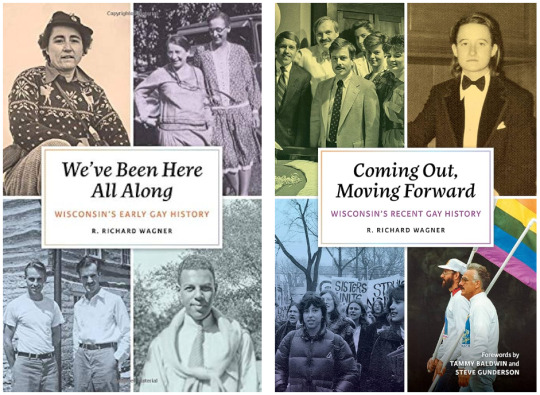
We’ve Been Here All Along and Coming Out, Moving Forward by Richard Wagner, detailing queer history in Wisconsin.

Joe Hammersley (far right), the driving force behind the Gay Purges at UW in the 1950s. Photo from 1951 Badger Yearbook, UW Archives.
Defining exactly what counts as “queer spacemaking” has been a process for me. At first glance, some counter-intuitive locations are included on the map, such as the places where men were arrested during the Gay Purges. These may seem like an absence of queer space, since these spaces were being policed and persecuted by the authorities. However, in order to have been a location that the police knew about, they first had to be a queer space, where LGBTQ+ people might have been comfortable expressing their true selves and desires, if only for a short while. Such locations include the basement of Science Hall, bathrooms in Bascom Hall, and 1514 Adams Street, the residence of two men who, upon being caught kissing outside, were arrested and were the first known victims of the Gay Purges.
All that being said, I really want to get feedback from the community on queer spaces to include on this project. If you head to tinyurl.com/queeratuw, you can submit your own entry to be included on the map! You can submit as many as you like, as long as the entries are places in Madison relating to queer history.
That’s all for now! I’ll make sure to keep you updated over the coming months as the project progresses.
11 notes
·
View notes
Text
Upon going through witchblr's "recipes" and comparing them to my 111 cookbooks, I've noticed something.
Witchblr recipes rely on you to read the recipe through to find out all of the ingredients, because even when they have an ingredient list up top, they'll still add things into the recipe itself that were not on that list. Which is fascinating to me, because it shows the difference between someone casually putting together a recipe to share versus what is sold in a cookbook.
Example A, 2018 Witchblr Recipe: A tea recipe. The ingredients listed are the plants desired for the tea itself. It does not list how much water you should use (which is important because it's asking for a net total of 5 1/2 to 7 tablespoons or 82.5 to 105 milliliters of plant matter), nor does it list its desired sweetener in the ingredients list when it calls for honey specifically.
Example B, 1951 Recipe 1: A desert iced tea. From the days when recipes didn't always list their ingredients first, this recipe calls for very specific measurements (now that I know that a heaping teaspoon is a measurement). It also features some slight commentary from Mrs. E. Henderson of Dewey, Arizona at the end, as cookbooks around this time were usually compilations of recipes sent in and shared by individual homes. This is most akin to the recipes I've seen shared on Witchblr with the level of casualness in the approach, though it still is rather exact in the measurements.
Example C, 1951 Recipe 2: Eggnog. This recipe is more like ours, with all of the ingredients listed first before getting into the directions. It also lists how many people it serves. Very short, fitting on the page just under Example B.
Example D, 2019 Recipe: A floral tea. Including some lore from the series it's from, this lists the ingredients (and their measurements) in the left-hand column, a difficulty level, an estimated prep time, a steeping time, how many servings it makes, and what it pairs well with (with page numbers for any other recipes in the book, though some of these list general other foods as well). There is a single step that goes through it, but the opposite page is entirely dedicated to a picture of the final result in a thematically-appropriate setting. This is very particular because there's a well-known IP attached to this, so the author seems to have felt pressured to make sure it looks professional.
I dunno, I just wanted to analyze some stuff. And share how big my cookbook collection has gotten. Welcome to my brain I guess.
14 notes
·
View notes
Text

MAD(i)SON - The theory of the plot
Madison - Blue Knees?
Well, I think that Blue Knees is the demon Madison was trying to summon via the ritual (but it wasn't in that form yet)
Following the failure of Madison to complete the ritual, the demon was tied to her camera which became a cursed object. At some point Lucas' family moves into a shared house and the grandmother starts spending more time with him.
However well before that, she buys him (the father, Johnny) a children book about the story of Blue Knees, as well as Madison's camera... probably from an estate sale (mention in the news report on the TV). The demon tried, but failed to possess her over a period of time after she acquired the camera. (1 believe this started around 1987, or shortly after)
Presumably the demon took the form of Blue Knees because it was trying to interact with Luca Johnny.
Likewise at times it was in the form of Madison because part of her soul was still tied to it, due to the incomplete ritual. Presumably the gas mask guy is also form it took, but more on that later.
There's some statements from the priest in the tapes about the demon merging with it's host via the ritual. That the demons are formless, until they succeed at merging with their target. So the demon itself wouldn't have a specific form, but could present itself via the hallucinations to be anything it wanted.
So it used Madison's form in some visions. Blue Knees in others.
———————-
Now it is also possible the gas mask guy is the demon too. Which ties into Madison. The scene in the church with the woman in confessional mentions her husband Hans ran gas chambers for the Nazi's.
That she turned him into the authorities in 1951.
(One of the years you can visit in the church)
Madison dies in 1987 (another year you can see in the church)... at the age of 43. However her coffin mentions she's born in 1944. Meaning in 1951
Madison would have been 7 (maybe 8). Madison likely imagined that her father, a gas chamber attendant in WW2, likely looked like that. (It's also possible the demon took that form in order to influence Madison into doing the ritual)
———————-
Yes the demon is the true antagonist.
But I'm not saying it's working "through"
Madison and Blue Knees (through indicates, to me, that both are servants of the demon). I'm saying Madison and Blue Knees are the demon, every time we see them. (Madison was, at one time, a human. But we never see her... because she dies decades before, in 1987)
Keep in mind Madison and Blue Knees aren't physically there. Likewise the house and warping of space and time are not physically happening. (Relisten to the tapes from the priest, he describes how possessed people go into a catatonic state for days and hallucinate)
We're playing as Lucas, who is hallucinating everything. He was "infected" by the demon before the game started. This is why his dad was screaming at him that he wasn't his son (and why the dad just disappears in a section of house we can't get to). In reality Lucas may very well be still sitting in that room imagining he's going around the house discovering clues.
The dad knew because the grandfather knew. The grandfather had set up a number of traps trying to contain the demon. We know he played with magical rituals, trying to connect with his wife (who died). We also know he sought help from the priest (in the tape).
———————-
They are all part of the same demon (the demon absorved them so to speak) but i have a different theory.
The timeline starts with Hans, goes to Madison, and then Luca.
I was looking at blue knees story and trying to understand if it was actually just a random story of there was more context to it, and maybe blue knees explains Hans appearance.
According to the story he crawled searching for his eyes therefore he had blue knees from bruising.
1. Maybe blue knees was once a gas chamber victim that was possessed before everyone. Dont forget nazis used zyklon-b in the gas chambers and zyklon has a blue taint. Even today you can still see walls in gas chambers in poland with blue stains on them. Considering Blue knees has a blue tone, it could symbolize that he was once a victim of Hans. Just like Luca is a victim of Madison (still the same demon).
2. People are claiming Hans could be Madison father but during the game it is revealed Madison would be maybe too young to kill Hans. Also during the morgue/elevator episode you have to take pictures of Madison victims in order, the second one is the father and his name is not Hans, but, that is not impossible since nazis who fled germany after ww2 had their names change once they were in spain, south america and so on, so it could also be a possibility.
#video games#game theory#game talk#fan theory#horror#horror games#Madison game#luca Madison#madison game theory#i’m sorry
5 notes
·
View notes
Text
Let's Read Peanuts (Yes, all of it) - January 1951
Got some feedback and I'm changing the format a bit. I'll be discussing fewer comics overall but they will all have copies of the strip directly attached (around 8-10 per post). I may still do honorable mentions from time to time but only if a month is particularly packed with important strips.
There are lots of great strips I just don't have room to comment on. I strongly encourage everyone to read the full month at the official GoComics page. Today's month starts HERE.
Jan 1, 1951

This is probably my favorite strip from the 50's and I'm not even sure why. I guess I just find everybody calling Charlie Brown a fat piece of shit to his face as he gives his best thousand yard stare to be really funny for some reason.
Jan 4, 1951

Ah… the ways language changes.
Jan 8, 1951

I'm in this photo and I don't like it.
Jan 12, 1951

Settle down, Beavis.
Jan 16, 1951

capitalism.png
Jan 22, 1951

One of the things I love about these early strips is that Charlie Brown is kind of an asshole and dishes out as much as he takes.
Jan 23, 1951

So now Snoopy is not only sentient but literate as well. I see… [adds a note to the conspiracy board]
Jan 25, 1951

No insightful commentary on this one. I just thought it was pretty funny.
Thoughts:
Welcome to 1951! In the event of nuclear fallout please hide under the nearest cardboard box for protection.
I'm just going to come out and say it: I like Goofy Chaos Gremlin Charlie Brown more than the version you get in the more modern strips. Yes, the classic iteration has it's charm but this primordial version is just so much more fun to spend time with. He still gets depressed, but it's not his baseline. Bad things happen, but he's an active participant and often the author of his own misery rather than a passive victim. His friends are little shits, but he's arguably the biggest little shit of them all. It's just so much better on every front.
Also, I get why Patty and Shermy (especially Shermy) eventually got sidelined into oblivion in favor of Lucy and Linus, but it still makes me irrationally angry when I read these early strips. They were ~so~ important early on and by the end they are just completely gone without any fanfare. Even in the more modern media they're rarely more than background extras.
You did them dirty, Schulz! Shame on you! [shakes fist]
#peanuts#comics#snoopy#charlie brown#shermy#patty#lets read#patty and shermy were robbed#give patty and shermy their own Apple+ TV special in the 50s style god damnit#wow hashtags on this site are pretty nuts
11 notes
·
View notes
Text
Get to know me✨
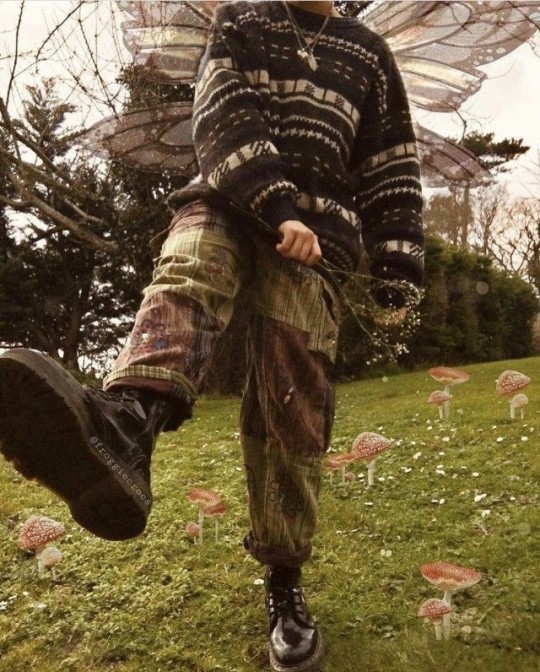
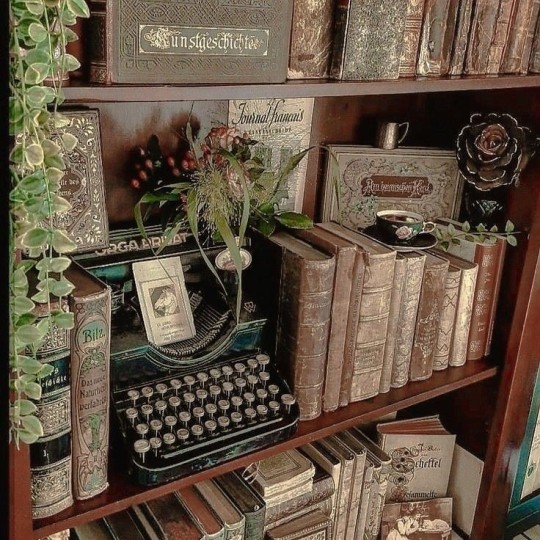
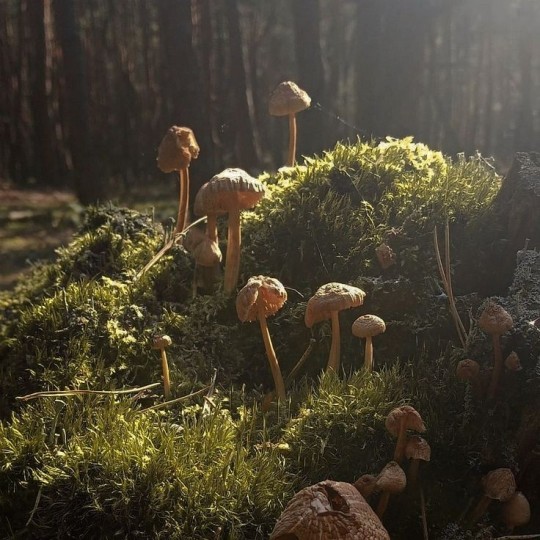
Basics 🌱
Name: Oliver
Nicknames: Ollie
Age: 21 (I didn't sign up for this)
Gender: transboy
Pronouns: he/him
Sexuality: arospec (greyromantic), asexual, polyromantic (basically into everyone except cis men), non-monogamous/polyamorous (lol poly²)
Mental health (bad lol): depresso since 10y, borderline personality, autistic, ADHD, undiagnosed tics
(Let me know if I say anything wrong/hurtful! We all make mistakes, let's help each other learn from them xx)


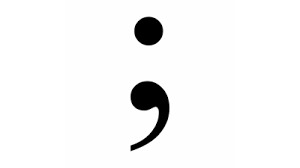
Interests 🌈
Special interests: fantasy (I like to say I'm a fairy/elf/goblin), psychology, plushies, fashion, Harry Potter: Marauders Era (marauders fandom blog: @jaylienpotter)
Hobbies: digital drawing, writing/reading fanfiction, have done horseriding, did theatre for 6 years
Passion: writing original stories, creating characters, world-building (author wannabe), music
Favourite animal: pandas (the chaos)
Favourite artist: Erin Hanson (picture of her work below)
Favourite book: I'll Give You The Sun, by Jandy Nelson
Favourite movies: Inception (2010); Memento (2000); Alice in Wonderland (1951); Finding Nemo (2003)
Favourite shows: Dark (German); Game of Thrones (not the last seasons)
Favourite musicians: Melanie Martinez; Billie Eilish
Top 3 Spotify Wrapped 2023: I am, Emhahee; Guilded Lily, Cults; ceilings, Lizzy McAlpine


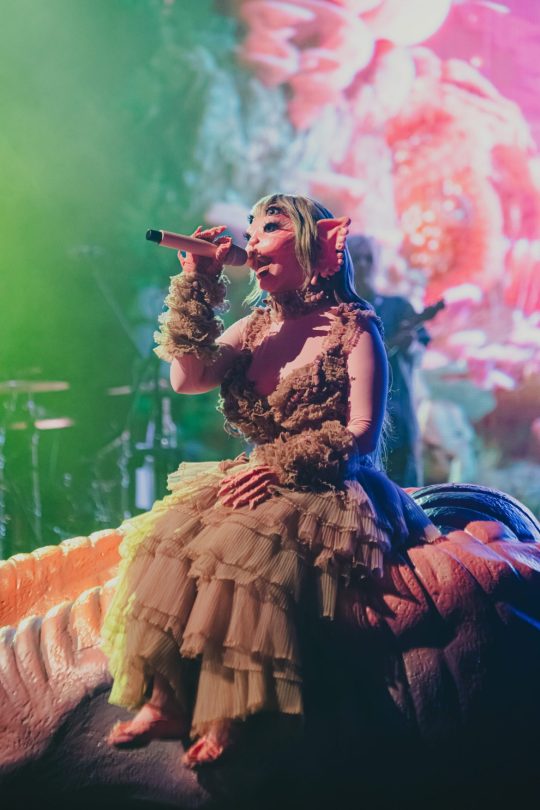
DMs & ask box open 💌
#get to know me#get to know the blogger#about myself#intro post#introduction#blog intro#introductory post
5 notes
·
View notes
Text
Gioconda and Si-Ya-U (*)
by Nâzım Hikmet Ran
Trans. by Randy Blasing and Mutlu Konuk 1993
to the memory of my friend SI-YA-U, whose head was cut of in Shanghai. (GIOCONDA AND SI-YA-U: Si-Ya-U, Hsiao San (b. 1896), Chinese revolutionary and man of letters. Hikmet met him in Moscow in 1922 and believed he had been executed in the bloody 1927 crackdown on Shanghai radicals after returning to China via Paris in 1924, when the Mona Lisa did in fact disappear from the Louvre. The two friends were reunited in Vienna in 1951 and traveled to Peking together in 1952. Translated into Chinese, this poem was later burned-along with Hsiao's works - in the Cultural Revolution.)
A CLAIM
Renowned Leonardo's world-famous "La Gioconda" has disappeared. And in the space vacated by the fugitive a copy has been placed. The poet inscribing the present treatise knows more than a little about the fate of the real Gioconda. She fell in love with a seductive graceful youth; a honey-tongued almond-eyed Chinese named Si-Ya-U. Gioconda ran off after her lover; Gioconda was burned in a Chinese city. I, Nazim Hikmet, authority on this matter, thumbing my nose at friend and foe five times a day, undaunted claim I can prove it; if I can't, I'll be ruined and banished forever from the realm of poesy. 1928
Part One Excerpts from Gioconda's Diary
"15 March 1924; Pairs, Louvre Museum" At last I am bored with the Louvre Museum. You can get fed up with boredom very fast. I am fed up with my boredom. And from the devastation inside me I drew this lesson; to visit a museum is fine, to be in a museum piece is terrible! In this place that imprisons the past I am placed under such a heavy sentence that as the paint on my face cracks out of boredom I'm forced to keep grinning without letting up. Because I am the Gioconda from Florence whose smile is more famous than Florence. I am bored with the Louvre Museum. And since you get sick soon enough of conversing with the past, I decided from now on to keep a diary. Writing of today may be of some help in forgetting yesterday... However, the Louvre is a strange place. Here you might find Alexander the Great's Longines watch complete with chronometer, but not a single sheet of clean notebook paper or a pencil worth a piaster. Damn your Louvre, your Paris. I'll write these entries on the back of my canvas. And so when I picked a pen from the pocket of a nearsighted American sticking his red nose into my skirts -his hair stinking of wine- I started my memoirs. I'm writing on my back the sorrow of having a famous smile... "18 March: Night" The Louvre has fallen asleep. In the dark, the armless Venus looks like a veteran of the Great War. The gold helmet of a knight gleams as the light from the night watchman's lantern strikes a dark picture. Here in the Louvre my days are all the same like the six sides of a wood cube. My head is full of sharp smells like the shelf of a medicine cabinet. "20 March" I admire those Flemish painters: is it easy to give the air of a naked goddess to the plump ladies of milk and sausage merchants? But even if you wear silk panties, cow + silk panties = cow. Last night a window was left open. The naked Flemish goddesses caught cold. All day today, turning their bare mountain-like pink behinds to the public, they coughed and sneezed... I caught cold, too. So as not to look silly smiling with a cold, I tried to hide my sniffles from the visitors. "1 April" Today I saw a Chinese: he was nothing like those Chinese with their topknots. How long he gazed at me! I'm well aware the favor of Chinese who work ivory like silk is not to be taken lightly... "11 April" I caught the name of the Chinese who comes every day: SI-YA-U. "16 April" Today we spoke in the language of eyes. He works as a weaver days and studies nights. Now it's a long time since the night came on like a pack of black-shirted Fascists. The cry of a man out of work who jumped into the Seine rose from the dark water. And ah! you on whose fist-size head mountain-like winds descend, at this very minute you're probably busy building towers of thick, leather-bound books to get answers to the questions you asked of the stars. READ SI-YA-U READ... And when your eyes find in the lines what they desire when your eyes tire, rest your tired head like a black-and-yellow Japanese chrysanthemum on the books.. SLEEP SI-YA-U SLEEP... "18 April" I've begun to forget the names of those Renaissance masters. I want to see the black bird-and-flower watercolors that slant-eyed Chinese painters drip from their long thin bamboo brushes.
NEWS FROM THE PARIS WIRELESS
HALLO HALLO HALLO PARIS PARIS PARIS... Voices race through the air like the fiery greyhounds. The wireless in the Eiffel Tower calls out: HALLO HALLO HALLO PARIS PARIS PARIS... "I, TOO, am Oriental - this voice is for me. My ears are receivers, too. I, too, must listen to Eiffel." News from China News from China News from China: The dragon that came down from the Kaf mountains has spread his wings across the golden skies of the Chinese homelands. But in this business it's not only the British lord's gullet shaved like the thick neck of a plucked hen that will be cut but also the long thin beard of Confucius!
FROM GIOCONDA'S DIARY
"21 April" Today my Chinese looked my straight in the eye and asked: "Those who crush our rice fields with the caterpillar treads of their tanks and who swagger through our cities like emperors of hell, are they of YOUR race, the race of him who CREATED you?" I almost raised my hand and cried "No!" "27 April" Tonight at the blare of an American trumpet -the horn of a 12-horsepower Ford- I awoke from a dream, and what I glimpsed for an instant instantly vanished. What I'd seen was a still blue lake. In this lake the slant-eyed light of my life had wrapped his fingers around the neck of a gilded fish. I tried to reach him, my boat a Chinese teacup and my sail the embroidered silk of a Japanese bamboo umbrella...
FNEWS FROM THE PARIS WIRELESS
HALLO HALLO HALLO PARIS PARIS PARIS... The radio station signs off. Once more blue-shirted Parisians fill Paris with red voices and red colors...
FROM GIOCONDA'S DIARY
"2 May" Today my Chinese failed to show up. "5 May" Still no sign of him... "8 May" My days are like the waiting room of a station: eyes glued to the tracks... "10 May" Sculptors of Greece, painters of Seljuk china, weavers of fiery rugs in Persia, chanters of hymns to dromedaries in deserts, dancer whose body undulates like a breeze, craftsman who cuts thirty-six facets from a one-carat stone, and YOU who have five talents on your five fingers, master MICHELANGELO! Call out and announce to both friends and foe: because he made too much noise in Paris, because he smashed in the window of the Mandarin ambassador, Gioconda's lover has been thrown out of France... My lover from China has gone back to China... And now I'd like to know who's Romeo and Juliet! If he isn't Juliet in pants and I'm not Romeo in skirts... Ah,if I could cry- if only I could cry... "12 May" Today when I caught a glimpse of myself in the mirror of some mother's daughter touching up the paint on her bloody mouth in front of me, the tin crown of my fame shattered on my head. While the desire to cry writhes inside me I smile demurely; like a stuffed pig's head my ugly face grins on... Leonardo da Vinci, may your bones become the brush of a Cubist painter for grabbing me by the throat - your hands dripping with paint - and sticking in my mouth like a gold-plated tooth this cursed smile...
Part Two The Flight
FROM THE AUTHOR'S NOTEBOOK
Ah, friends, Gioconda is in a bad way... Take it from me, if she didn't have hopes of getting word from afar, she'd steal a guard's pistol, and aiming to give the color of death to her lips' cursed smile, she'd empty it into her canvas breast...
FROM GIOCONDA'S DIARY
O that Leonardo da Vinci's brush had conceived me under the gilded sun of China! That the painted mountain behind me had been a sugar-loaf Chinese mountain, that the pink-white color of my long face could fade, that my eyes were almond-shaped! And if only my smile could show what I feel in my heart! Then in the arms of him who is far away I could have roamed through China...
FROM THE AUTHOR'S NOTEBOOK
I had a heart-to-heart talk with Gioconda today. The hours flew by one after another like the pages of a spell-binding book. And the decision we reached will cut like a knife Gioconda's life in two. Tomorrow night you'll see us carry it out...
FROM THE AUTHOR'S NOTEBOOK
The clock of Notre Dame strikes midnight. Midnight midnight. Who knows at this very moment which drunk is killing his wife? Who know at this very moment which ghost is haunting the halls of a castle? Who knows at this very moment which thief is surmounting the most unsurmountable wall? Midnight... Midnight... Who knows at this very moment... I know very well that in every novel this is the darkest hour. Midnight strikes fear into the heart of every reader... But what could I do? When my monoplane landed on the roof of the Louvre, the clock of Notre Dame struck midnight. And, strangely enough, I wasn't afraid as I patted the aluminum rump of my plane and stepped down on the roof... Uncoiling the fifty-fathom-long rope wound around my waist, I lowered it outside Gioconda's window like a vertical bridge between heaven and hell. I blew my shrill whistle three times. And I got an immediate response to those three shrill whistles. Gioconda threw open her window. This poor farmer's daughter done up as the Virgin Mary chucked her gilded frame and, grabbing hold of the rope, pulled herself up... SI-YA-U, my friend, you were truly lucky to fall to a lion-hearted woman like her...
FROM GIOCONDA'S DIARY
This thing called an airplane is a winged iron horse. Below us is Paris with its Eiffel Tower- a sharp-nosed, pock-marked, moon-like face. We're climbing, climbing higher. Like an arrow of fire we pierce the darkness. The heavens rise overhead, looming closer; the sky is like a meadow full of flowers. we're climbing, climbing higher. ................................................... ................................................... ................................................... I must have dozed off - I opened my eyes. Dawn's moment of glory. The sky a calm ocean, our plane a ship. I call this smooth sailing, smooth as butter. Behind us a wake of smoke floats. Our eyes survey blue vacancies full of glittering discs... Below us the earth looks like a Jaffa orange turning gold in the sun... By what magic have I climbed off the ground hundreds of minarets high, and yet to gaze down at the earth my mouth still waters...
FROM THE AUTHOR'S NOTEBOOK
Now our plane swims within the hot winds swarming over Africa. Seen from above, Africa looks like a huge violin. I swear they're playing Tchaikovsky on a cello on the angry dark island of Africa. And waiving his long hairy arms, a gorilla is sobbing...
FROM THE AUTHOR'S NOTEBOOK
We're crossing the Indian Ocean. We're drinking in the air like a heavy, faint-smelling syrup. An keeping our eyes on the yellow beacon of Singapore - leaving Australia on the right, Madagascar on the left - and putting our faith in the fuel in the tank, we're heading for the China Sea... "from the journal of a deckhand named John aboard a British vessel in the China Sea" One night a typhoon blows up out of the blue. Man, what a hurricane! Mounted on the back of yellow devil, the Mother of God whirls around and around, churning up the air. And as luck would have it, I've got the watch on the foretop. The huge ship under me looks about this big! The wind is roaring blast after blast, blast after blast The mast quivers like a strung bow.(*) *[What business do you have being way up there? Christ, man, what do you think you are-a stork? N.H.] Oops, now we're shooting sky-high -- my head splits the clouds. Oops, now we're sinking to the bottom -- my fingers comb the ocean floor. We're learning to the left, we're leaning to the right -- that is, we're leaning larboard and starboard. My God, we just sank! Oh no! This time we're sure to go under! The waves leap over my head like Bengal tigers. Fear leads me on like a coffee-colored Javanese whore. This is no joke - this is the China Sea... (*) *[The deckhand has every right to be afraid. The rage of the China Sea is not to be taken lightly. N.H.] Okay, let's keep it short. PLOP... What's that? A rectangular piece of canvas dropped from the air into the crows nest. The canvas was some kind of woman! It struck me this madame who came from the sky would never understand our seamen's talk and ways. I got right down and kissed her hand, and making like a poet, I cried: "O you canvas woman who fell from the sky! Tell me, which goddess should I compare you to? Why did you descend here? What is your large purpose?" She replied: "I fell from a 550-horsepower plane. My name is Gioconda, I come from Florence. I must get to Shanghai as soon as possible.'
FROM GIOCONDA'S DIARY
The wind died down, the sea calmed down. The ship makes strides toward Shanghai. The sailors dream, rocking in their sailcloth hammocks. A song of the Indian Ocean plays on their thick fleshy lips: "The fire of the Indochina sun warms the blood like Malacca wine. They lure sailors to gilded stars, those Indochina nights, those Indochina nights. Slant-eyed yellow Bornese cabin boys knifed in Sigapore bars paint the iron-belted barrels blood-red. Those Indochina nights, those Indochina nights. A ship plunges on to Canton, 55,000 tons. Those Indochina nights... As the moon swims in the heavens like the corpse of a blue-eyed sailor tossed overboard, Bombay watches, leaning on its elbow... Bombay moon, Arabian Sea. The fire of the Indochina sun warms the blood lie Malacca wine. They lure sailors to gilded stars, those Indochina nights, those Indochina nights..."
Part Three Gioconda's End THE CITY OF SHANGHAI
Shanghai is a big port, an excellent port, It's ships are taller than horned mandarin mansions. My, my! What a strange place, this Shanghai... In the blue river boats with straw sails float. In the straw-sailed boats naked coolies sort rice, raving of rice... My, my! What a strange place, this Shanghai... Shanghai is a big port, The whites' ships are tall, the yellows' boats are small. Shanghai is pregnant with a red-headed child. My, my!
FROM THE AUTHOR'S NOTEBOOK
Last night when the ship entered the harbor Gioconda's foot kissed the land. Shanghai the soup, she the ladle, she searched high and low for her SI-YA-U.
FROM THE AUTHOR'S NOTEBOOK
"Chinese work! Japanese work! Only two people make this - a man and a woman. Chinese work! Japanese work! Just look at the art in this latest work of LI-LI-FU." Screaming at the tip of his voice, the Chinese magician LI. His shriveled yellow spider of a hand tossed long thin knives into the air: one one more one one more five one more. Tracing lightning-like circles in the air, his knives flew up in a steady stream. Gioconda looked, she kept looking, she'd still be looking but, like a large-colored Chinese lantern, the crowd swayed and became confused: "Stand back! Gang way! Chiang Kai-shek's executioner is hunting down a new head. Stand back! Gang way!" One in front and one close behind, two Chinese shot around the corner. The one in front ran toward Gioconda. The one racing toward her, it was him, it was him - yes, him! Her SI-YA-U, her dove, SI-YA-U... A dull hollow stadium sound surrounded them. And in the cruel English language stained red with the blood of yellow Asia the crown yelled: "He's catching up, he's catching up, he caught- catch him!" Just, three steps away from Gioconda's arms Chiang Kai-shek's executioner caught up. His sword flashed... Thud of cut flesh and bone. Like a yellow sun drenched in blood SI-YA-U's head rolled at her feet... And this on a death day Gioconda of Florence lost in Shanghai her smile more famous than Florence.
FROM THE AUTHOR'S NOTEBOOK
A Chinese bamboo frame. In the frame is a painting. Under the painting, a name: "La Gioconda"... In the frame is a painting: the eyes of the painting are burning, burning. In the frame is painting: the painting in the frame comes alive, alive. And suddenly the painting jumped out of the frame as if from a window; her feet hit the ground. And just as I shouted her name she stood up straight before me: the giant woman of a colossal struggle. She walked ahead. I trailed behind. From the blazing red Tibetan sun to the China Sea we went and came, we came and went. I saw Gioconda sneak out under the cover of darkness through the gates of a city in enemy hands; I saw her in a skirmish of drawn bayonets strangle a British officer; I saw her t the head of a blue stream swimming with stars wash the lice from her dirty shirt... Huffling and puffling, a wood-burning engine dragged behind it forty red cars seating forty people each. The cars passed one by one. In the last car I saw her standing watch: a frayed lambskin hat on her head, boots on her feet, a leather jacket on her back...
FROM THE AUTHOR'S NOTEBOOK
Ah, my patient reader! Now we find ourselves in the French military court in Shanghai. The bench: four generals, fourteen colonels, and an armed black Congolese regiment. The accused: Gioconda. The attorney for the defense: an overly razed -that is, overly artistic- French painter. The scene is set. We're starting. "The defense attorney presents his case:" "Gentlemen, this masterpiece that stands in your presence as the accused is the most accomplished daughter of a great artist. Gentlemen, this masterpiece... Gentlemen... my mind is on fire... Gentlemen... Renaissance... Gentlemen, this masterpiece- twice this masterpiece... Gentlemen, uniformed gentlemen..." "C-U-U-U-T! Enough. stop sputtering like a jammed machine gun! Bailiff, read the verdict." "The bailiff reads the verdict:" "The laws of France have been violated in China by the above-named Gioconda, daughter of one Leonardo. Accordingly, we sentence the accused to death by burning. And tomorrow night at moonrise, a Senegalese regiment will execute said decision of this military court..."
THE BURNING
Shanghai is a big port. The whites' ships are tall, the yellows' boats small. A thick whistle. A thin Chinese scream. A ship steaming into the harbor capsized a straw-sailed boat... Moonlight. Night. Handcuffed, gioconda waits. Blow, wind, blow... A voice: "All right, the lighter. Burn, Gioconda, burn..." A silhouette advances, a flash... They lit the lighter and set Gioconda on fire. The flames painted Gioconda red. She laughed with a smile that came from her heart. Gioconda burned laughing... Art, Shmart, Masterpiece, Shmasterpiece, And so On, And So Forth, Immortality, Eternity- H-E-E-E-E-E-E-E-E-E-E-E-E-Y... "HERE ENDS MY TALE'S CONTENDING, THE REST IS LIES UNENDING..." THE END 1929
6 notes
·
View notes
Text
Book and adaptation of Alice in wonderland
Author: Amanda Rafaela Faria Santos


Introduction
Tim Burtom, was the director scheduled to direct this adaptation of the movie “Alice in Wonderland”. A very well thought out choice, as he has a unique visual style and, with that, brought many elements that would help make the film not only magical, but a box office success. The 2010 film “Alice in Wonderland” is a continuation of the animation produced by Disney in 1951. Well, the animation was inspired by the first book, with the same title. While the live action was inspired by both the first story and the sequel: "Alice Through the Looking Glass". That said, this brief study will analyze the adaptation of the book by Tim Burtom and Lewis Carroll, relating the concepts with the Bildungsroman.
Amanda Faria
About the book
It tells the story of Alice, the little girl who falls down a rabbit hole in a fantasy place, inhabited by strange creatures.
There, Alice goes on weird and absurd adventures, faces uncommon situations, meets extravagant beings, is asked enigmatic and illogical questions. At the end of the story, Alice wakes up, and realizes that it was all a dream. Let’s talk a little about the works that will be analyzed.
About the adaptation:
Alice, an unpretentious and intelligent 19-year-old. After spotting an curious rabbit, she decides to follow him, but ends up falling into a rabbit hole in the garden. This hole takes her to an eccentric place. There is full of unique and curious characters. Until then, Alice didn't believe that place was real. Because, she does not remember that she was there in her childhood. However, as the story progresses, Alice realizes, that she is there on an important mission.
Wait, what is Bildungsroman, definition?
A German term that means "novel of formation" or "novel of education"
The main character goes trought some dificult situations in order to gain experience and attain moral development. (CHRISTY, 2016)
How to apply this concept in Alice in Wonderland?
1- “Development of mind and the character of the protagonist from childhood to adulthood":
Little Alice x Older Alice
In the book, Alice encounters a challenging situation as when she tries to open the tiny door where she has to be really small to pass and ends up being too big after eating a cake that makes her grow a lot she starts crying because she could not deal with that situation.
In the movie, differently from the book, Alice is now more mature and know how to solve her problems, even though she still makes the same mistake she did as a child she did not cry and still tries rationalize to solve the puzzle.
2- “Tension or conflicts with the outer world and the inner world of the protagonist":
Little Alice
When Alice first enters Wonderland, she is confused about the place, obviously, but she is also confused about herself. She keeps asking herself if she is another person. Like in the following excerpt:
“Dear, dear ! How queer everything is today ! And yesterday things went on just as usual. I wonder if I’ve been changed in the night? Let me think: was I the same when I got up this morning? I almost think I can remember feeling a little different. But if I ’m not the same, the next question is, Who in the world am I? Ah, that’s the great puzzle !” (CARROLL, 1865).
A little help
Alice's conversation with the Caterpillar is an extension to this identity confusion and this is reflected in the movie, where there is a similar interaction between them. As in the book, the Caterpillar insists in the question "Who are you?"
Other character that makes Alice questions more about herself and what she learned in the society she has been living on is the Cheshire cat. The following exerpt shows a little of it:
“Would you tell me, please, which way I ought to walk from here ?” “That depends a good deal on where you want to get to,” said the Cat. “I don ’t much care where—” said Alice. “Then it doesn’t matter which way you walk,” said the Cat. “ —so long as I get somewhere,” Alice added as an explanation (CARROLL, 1865, p. 89).
3- “Temperamental loss must be there which makes the protagonist to undergo a long journey;":
In the book, a child Alice is shown, therefore, with characteristics belonging to childhood, such as: imagination, courage, curiosity, and belief in fantasies.
But, in Tim Burtom's adaptation, with the 19-year-old Alice, these characteristics disappear. Because, she spent many years without visiting that fantasy world. And this difference is noticed by the characters when she returns to Wonderland. They say to the Rabbit, who brought her, "She’s not Alice" "you brought the wrong Alice" "that would never be my Alice".
4- “Time space must be long so that the protagonist gets a long time to get maturity of mind and character"
At the end of the film, after a long journey and many experiences, alice matures again, but now recovering her old characteristics. Your courage and imagination.
Conclusion
Finally, Bildungsroman finds himself in Alice's story. Because this work traces Alice's development fromher childhood, making her her goal-oriented personality with her imagination and inquisitive mind. In thefilm we can see a regression of her character, mostly by submitting to the rules of her then society, butshe eventually finds herself again.
"It's no use going back to yesterday, because I was a different person then." (CARROLL, 1865, p. 155)
References.
• CHRISTY, G. M. A. Buildungsroman. The Dawn Journal, India, v. 5, n. 1, p. 1234-1237, Jan./Jun. 2016. Available at: https://thedawnjournal.in/wp-content/uploads/2016/01/6-Christy.pdf. Access on: 20 January, 2022.
6 notes
·
View notes